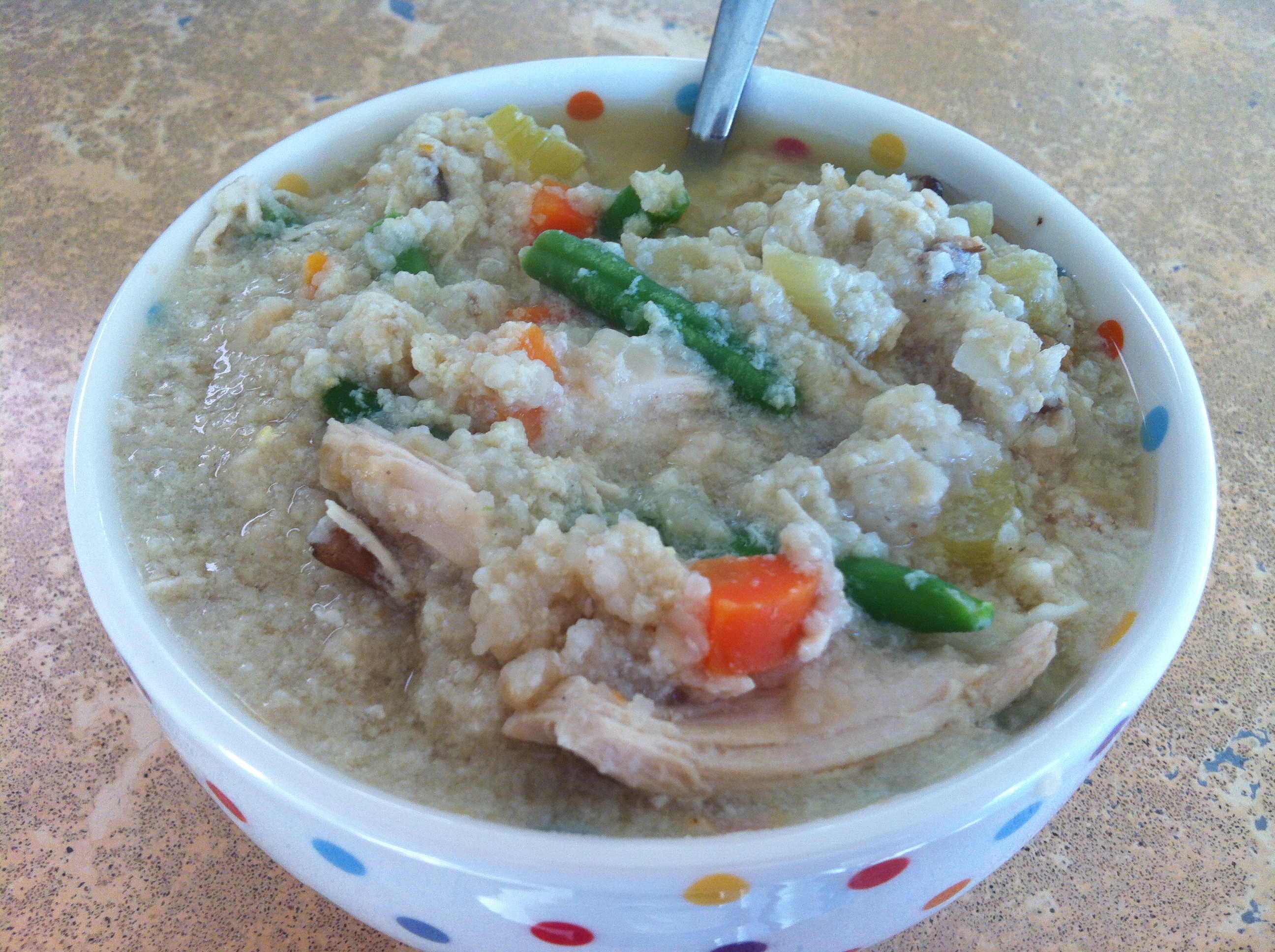Jenjen and I have been friends since I was 12 and she was 9. Well, we were more like younger sister and older sister; we even still call each other "Meimei" and "Jiejie," the Chinese honorifics that older and younger sisters call each other. I would post a photo from those days, but I was going through a heinously awkward phase and I don't want to subject you to it. (Jenjen was always completely COMPLETELY adorable, though.)
When she moved to New York for graduate school, we became grown-up friends, big-time. Jenjen (along with our sister-in-spirit, Mayumi) danced a hula with me at my wedding
 |
| Photo credit to Mayumi Shimose Poe |
and held Kamal when he was a teeny-tiny.
 |
| photo credit to Mayumi Shimose Poe |
Jook was never really my comfort food. I never craved it when I wanted to make myself feel better after a bad day. When I was a kid, it was what my mom fed me when I was sick. So naturally, it was always bland because I couldn't taste anything. On the other hand, Turkey Jook is a whole different ballgame to me.
Every Thanksgiving, I would look forward to the post-feast meals almost more than the actual meal itself. My popo (grandmother) would transform the turkey carcass and meal remnants into this lovely rich broth that would take center stage in an incredibly luxurious jook. But, it wasn't just about ravenously devouring bowls of that jook with my family; it was about my alone time with my popo while we made it together.
My popo was one of my biggest influences in my early childhood. Instead of hiring childcare while my parents worked, she was my secondary caregiver. And she'd regale me with stories of her own childhood, where she worked in the Hawaii sugar cane plantation fields, while she kept me busy with yard work or kitchen duty. So now, I frequently look back to her kitchen time life lessons when I'm in my own times of distress.
She taught me about honor, love, family, respect, sacrifice, ....she taught me to be a warrior, like her. And she did it all between washing vegetables, brandishing her giant meat cleaver, and tossing morsels in her wok; while I hungrily watched at the hem of her worn out draw-string denim apron. So while we made turkey jook, one of her biggest lessons from that was to not waste any food.
Her particular brand of turkey jook was different from the rest of the island. Mainly because it involved throwing everything we didn't finish into the pot to flavor the broth. So naturally, it tasted different every year. But, for some reason we'd undoubtedly always have leftover raw carrots that she'd finely dice and throw in for color and sweetness. So to this day, I can't have turkey jook without specifically going to buy carrots for that purpose.
I've had many years where my peers would laugh at my family's odd carrot-filled turkey jook. But, I just smile at them. Because to me, that's my popo's wisdom "chop-suey-ed" into a bowl, and served steaming hot. Thank you, Popo, for the love, the wisdom, and the laughs. I hope to make you proud as the warrior that I've become today.
Turkey Jook
(sorry, there are no measurements. Popo never measured anything except by saying..."oh, throw a little of this, and a little of that. Use your tastebuds.")
Ingredients:
-Turkey carcass (reserve the leftover turkey meat)
-water
-leftover vegetables
-ginger
-cilantro
-onions
-green onions
-star anise (small handful)
-sesame oil
-soy sauce
-1 cup white jasmine rice
-2 large carrots, finely diced
Sautee the ginger, onions, green onions, and star anise in sesame oil on medium high for a few minutes, until onions have become translucent. Add turkey carcass, leftover vegetables, and enough cold water to cover. Bring to a boil. Cover and put on simmer for 2 hours. Strain broth out. Sautee another onion and cilantro in a stock pot for a few minutes. Add rice and coat. Add strained broth and bring to a boil (approximately 9:1 water to rice ratio). Simmer on medium low and stir frequently for 2 hours. In the last half an hour, add in the diced carrots and turkey meat. Add a few dashes of soy sauce, to taste. Serve hot with cilantro leaves as garnish.
 |
| [Mmmmm. Jenjen says "...needs thousand-year-old-egg." But I think it looks perfect just the way it is.] |
























